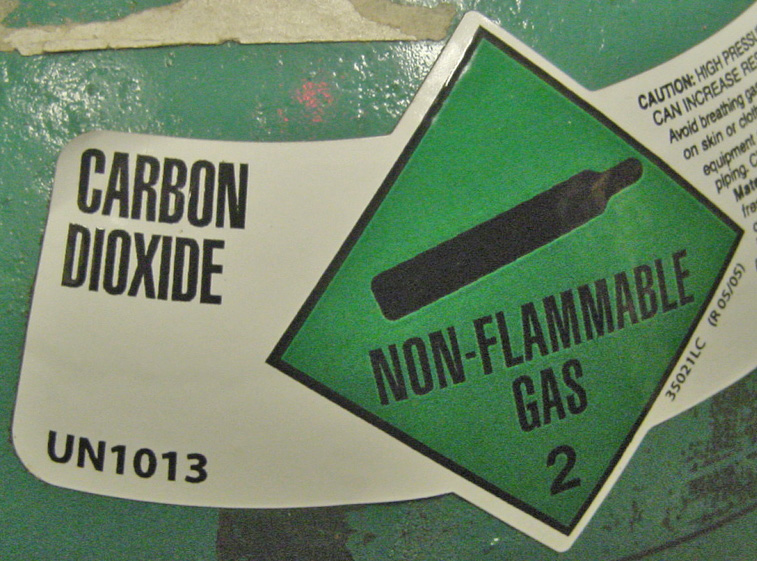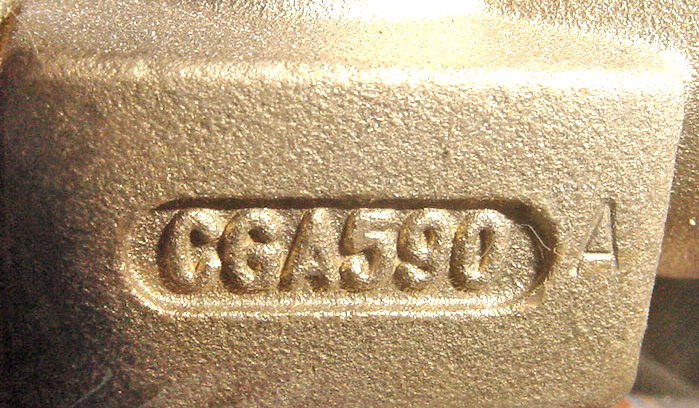CORRECT LABELING AND PROPER FITTINGS ON COMPRESSED GAS CONTAINERS
CGA Safety Bulletin 10-998
It is essential that any person handling a container
of compressed gas or cryogenic liquid be certain of the contents before
the container is connected to a system. Discharging a gas or cryogenic
liquid into a system not intended for the material could cause a fire,
explosion, equipment failure, gas leak, or other hazard resulting in a
serious or fatal injury.
Before attempting to connect a container to a system, be certain of the following: 
- Personnel using the container are trained and knowledgeable regarding the product,
container, fittings, equipment, and proper connection procedures.
- The container is clearly and properly marked or labeled with the identification of the
contents, and there are no conflicting markings, labels, or coloring. Do not rely solely
on the color of the container to identify the contents. If there is any conflict or doubt
about the contents, do not use the container.
- The labeled contents are the correct product for use in the system.

- The container has the proper outlet connection(s) for its contents according to
ANSI/CGA
V-1, American National, Compressed Gas Association Standard for Compressed Gas Cylinder
Valve Outlet and Inlet Connections [1].
- The connection(s) on the container and the system fit together properly without being
too loose or too tight. A proper connection will go together smoothly. Do not use adapters
or excessive force.
See CGA P-1, Safe Handling of Compressed Gases in Containers, and CGA C-7, Guide to the
Preparation of Precautionary Labeling and Marking of Compressed Gas Containers, for
additional information [2, 3].
WARNING: Failure to follow these precautions has caused
fatalities.
- [1] ANSI/CGA V-1 American National, Compressed Gas Association Standard for Compressed
Gas Cylinder Valve Outlet and Inlet Connections, Compressed Gas Association, Inc., 1725
Jefferson Davis Hwy., Suite 1004, Arlington, VA 22202.
- [2] CGA P-1, Safe Handling of Compressed Gases in Containers, Compressed Gas
Association, Inc., 1725 Jefferson Davis Hwy., Suite 1004, Arlington, VA 22202.
- [3] CGA C-7, Guide to the Preparation of Precautionary Labeling and Marking of
Compressed Gas Containers, Compressed Gas Association, Inc., 1725 Jefferson Davis Hwy.,
Suite 1004, Arlington, VA 22202
Empty Containers
Empty containers are not really empty. They contain gas at atmospheric pressure,
which of course does not cause deflection of the gauge needle because the gauge reports
PSIG the pressure greater than atmospheric. In absoluteterms the cylinder
still contains approximately15 PSIA(pounds per square inch absolute). Depending on
cylinder size, this can be a substantial quantity of toxic or flammable substance.
It is important to ensure that gas containers are in a safe condition after use. Before
returning empty gas containers, a check should be carried out to ensure that:
- the container valve is closed and not leaking
- the container valve outlet plug or cap nut, when
supplied, has been securely refitted. This is particularly important
if the contents of the container are toxic
- the container valve protection device (cap) is properly
fitted
|





